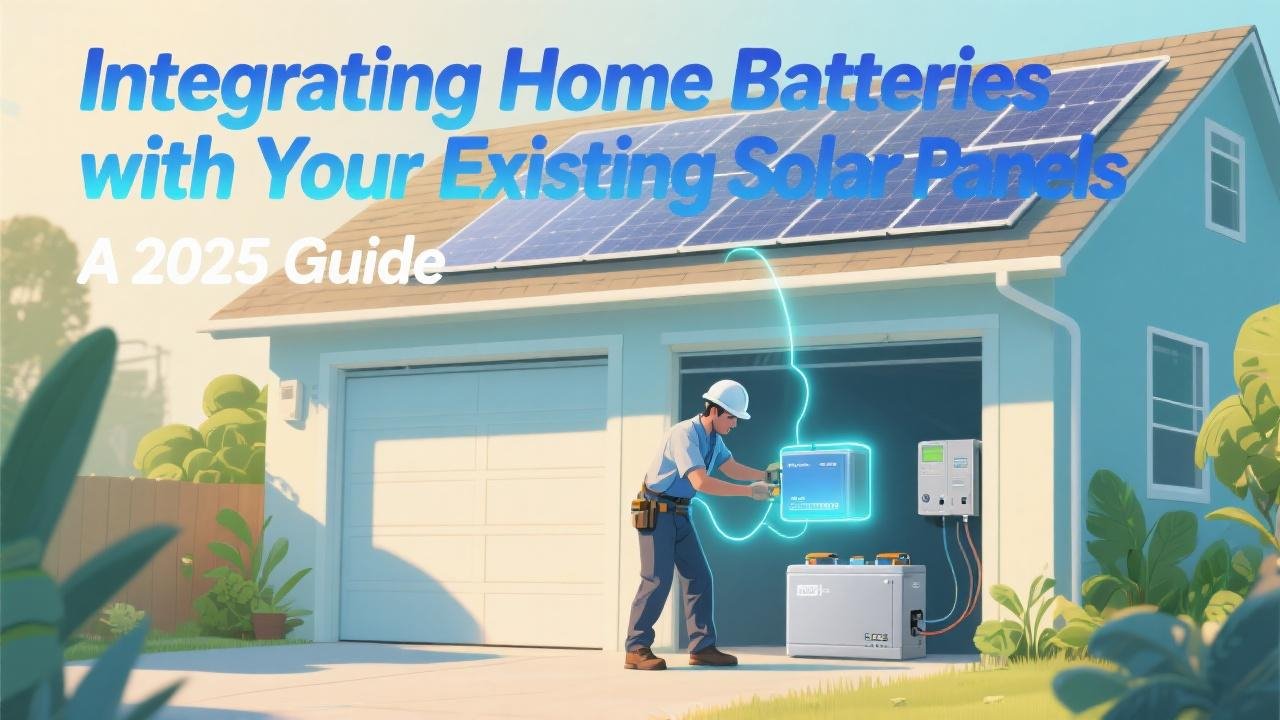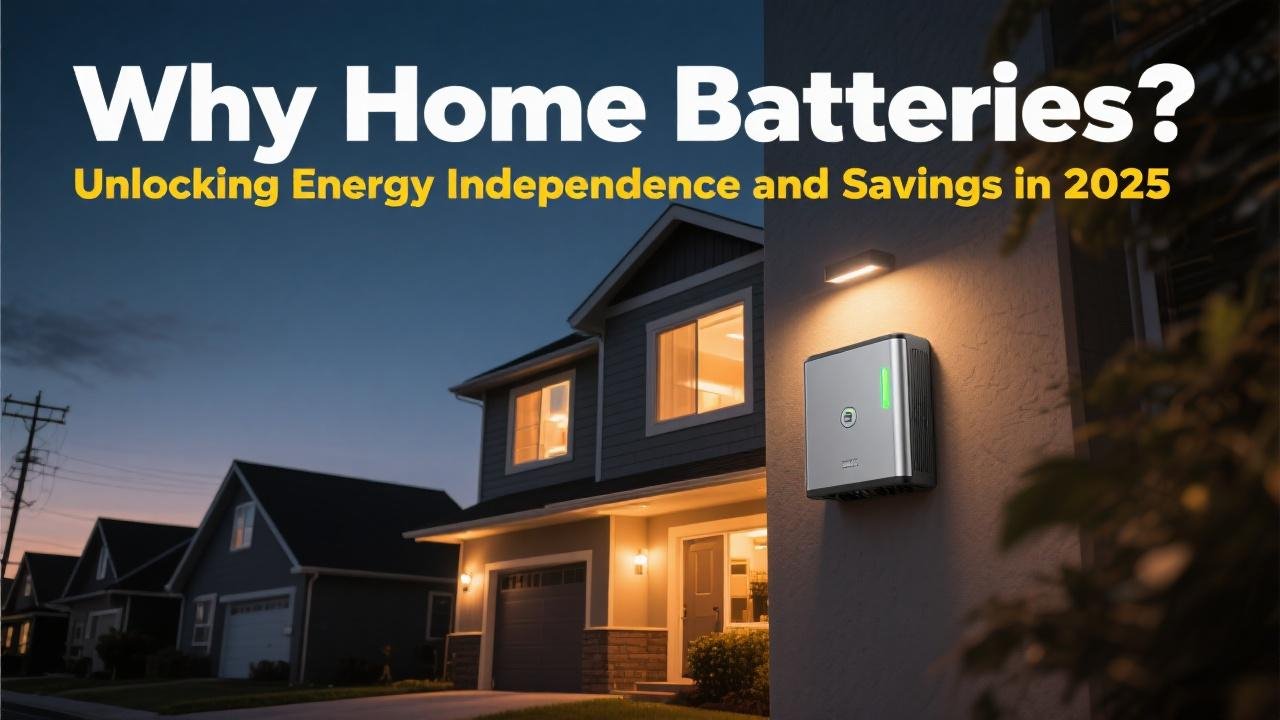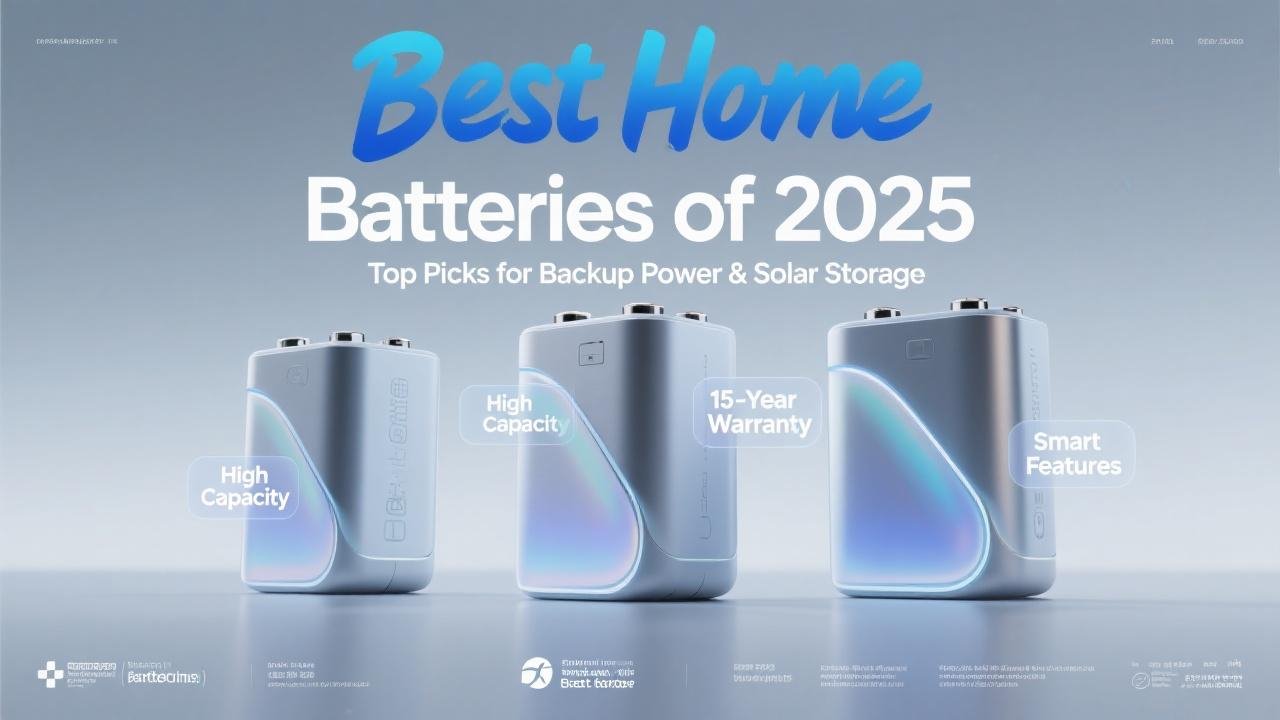Introduction: Supercharging Your Solar Investment with Storage
You’ve already embraced solar energy, enjoying lower electricity bills and a reduced carbon footprint from your existing solar panel system. But as energy markets evolve and the desire for energy resilience grows, you might be wondering: can I add a battery to my current setup? The answer is a resounding yes! In 2025, retrofitting a home battery to an existing solar PV system is a popular and increasingly straightforward upgrade, allowing you to unlock even more value from your initial solar investment.
This guide will explore how home batteries can be integrated with existing solar panels, the different coupling methods (AC vs. DC), key considerations, and how platforms like EnergySage can help you find qualified installers for this upgrade.
Why Add a Battery to Your Existing Solar System?
Adding a battery to your established solar array offers several compelling advantages, many of which have become even more pertinent in 2025:
- Maximize Self-Consumption: Store your excess solar energy produced during the day to use in the evenings or on cloudy days, rather than exporting it all to the grid. This is especially valuable if your utility has low net metering export rates or Time-of-Use (TOU) plans with expensive peak periods.
- Backup Power: Gain resilience against power outages. A battery can keep your essential appliances running when the grid goes down.
- Optimize for Changing Utility Rates: As utilities shift towards TOU rates or demand charges, a battery allows you to strategically use stored solar energy to avoid high-cost periods.
- Increase Energy Independence: Reduce your reliance on the utility grid and take greater control over your home’s energy supply.
- Potentially Qualify for Incentives: Adding a battery (3 kWh or larger) charged by your solar panels can make the battery portion of your upgrade eligible for the 30% federal tax credit. Some state or local incentives might also apply.
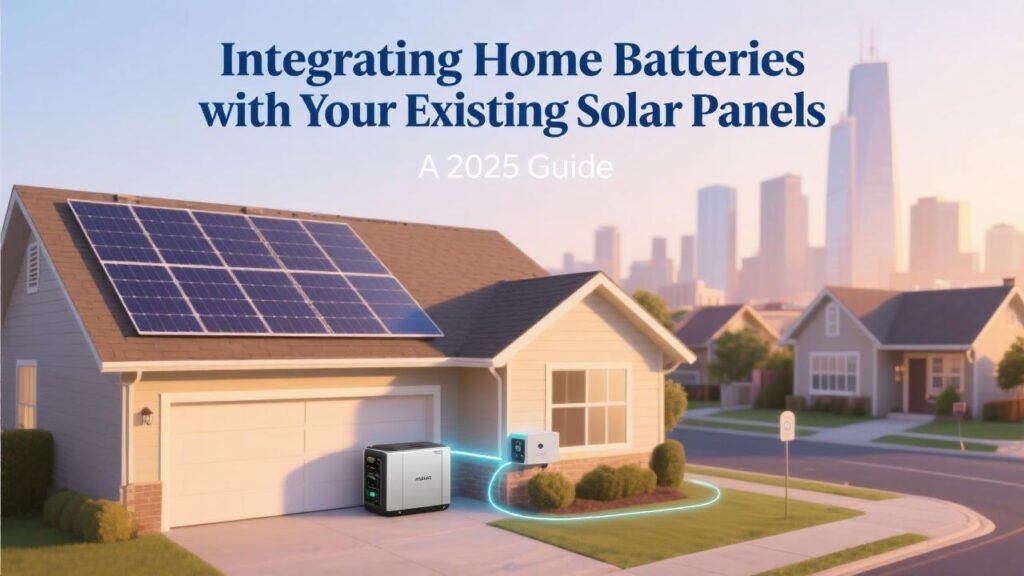
How Batteries Integrate with Solar: AC Coupling vs. DC Coupling
When adding a battery to an existing solar PV system, the method of “coupling” the battery to your solar setup is a key technical consideration. There are two primary approaches: AC coupling and DC coupling.
1. AC Coupling:
- How it Works: In an AC-coupled system, the DC power from your solar panels first flows to your existing grid-tied solar inverter, where it’s converted to AC power. If this AC power isn’t immediately used by your home, it can then be directed to a separate battery inverter (or an inverter built into the battery itself, like with many modern battery systems such as the Tesla Powerwall or Enphase IQ Battery ). This battery inverter converts the AC power back to DC to charge the battery. When you need to use the stored energy, the battery inverter converts it from DC back to AC for your home.
- Best Suited For: AC coupling is generally the easiest and most common way to add a battery to an existing solar PV system that already has a standard grid-tied solar inverter.
- Pros:
- Flexibility: Compatible with almost any existing grid-tied solar inverter. You don’t need to replace your current solar inverter.
- Easier Retrofit: Installation can be simpler as the battery system is added as a separate AC-connected component.
- Scalability: Easier to scale the battery system independently of the solar PV system.
- Cons:
- Slightly Lower Round-Trip Efficiency: There are more energy conversions (DC to AC, then AC to DC for charging, then DC to AC for discharging), which can lead to slightly higher energy losses compared to DC coupling. However, modern AC-coupled batteries like the Enphase IQ Battery 5P still boast good round-trip efficiencies (around 90%).
2. DC Coupling:
- How it Works: In a DC-coupled system, the DC power from your solar panels goes to a charge controller, which can then directly charge the DC battery. When the battery discharges, the DC power flows to a multi-mode or hybrid inverter, which can convert it to AC power for your home and also manage the flow of solar energy.
- Best Suited For: DC coupling is more common in new solar-plus-storage installations or if you’re planning to replace your existing solar inverter anyway with a hybrid inverter capable of managing both solar and battery. It’s also prevalent in off-grid systems.
- Pros:
- Higher Round-Trip Efficiency: Fewer energy conversions (DC from solar directly to DC battery) generally mean slightly better efficiency.
- Often More Compact: Can sometimes result in a more streamlined system with fewer major components if a hybrid inverter is used.
- Cons:
- Less Flexible for Retrofits: Often requires replacing your existing solar inverter with a compatible hybrid inverter, which can add significant cost and complexity to a retrofit.
- May Have Limitations on PV Array Size: Some hybrid inverters have limitations on the size of the solar array they can support.
For most homeowners with an existing solar system, AC coupling will be the more practical and cost-effective retrofit solution.
Key Considerations When Adding a Battery to an Existing System:
- Compatibility:
- Solar Inverter: While AC coupling offers broad compatibility, it’s still important to ensure the chosen battery system can effectively communicate and integrate with your home’s electrical setup.
- Battery and Inverter Pairing: If the battery doesn’t have its own integrated inverter, it needs to be paired with a compatible battery inverter.
- System Sizing:
- Battery Capacity (kWh): How much storage do you need for backup or TOU arbitrage? This depends on your energy usage and goals.
- Battery Power Output (kW): Ensure the battery can power your essential loads simultaneously during an outage.
- Existing Solar System Age and Condition: If your solar panels or existing inverter are very old or nearing the end of their warranty, discuss with your installer whether it makes sense to upgrade any of those components at the same time as adding the battery.
- Electrical Panel Capacity: Your main electrical panel must have the capacity to handle the additional load of the battery system. An upgrade might be necessary.
- Space and Location: You’ll need a suitable, accessible, and code-compliant location to install the battery unit(s) and any associated hardware.
- Cost and Incentives: Factor in the total cost of the battery, installation, and any potential electrical upgrades. Remember to explore eligibility for the 30% federal tax credit and any state/local incentives.
- Installer Expertise: Choose an installer with proven experience in retrofitting battery storage to existing solar systems. They should be knowledgeable about both AC and DC coupling methods and be able to recommend the best approach for your situation.
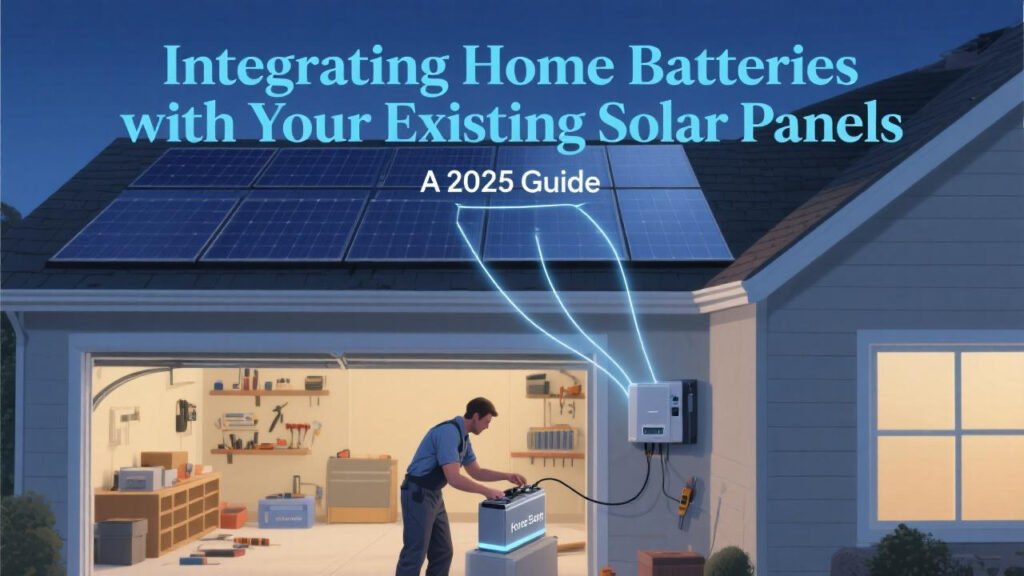
The Role of EnergySage in Your Battery Retrofit Journey:
Upgrading your existing solar system with battery storage involves technical considerations and financial planning. EnergySage can be an invaluable resource:
- Access to Qualified Installers: EnergySage connects you with a network of vetted installers, many of whom specialize in solar-plus-storage solutions and battery retrofits.
- Compare Multiple Quotes: Easily compare quotes for different battery brands, system designs (including coupling methods), and installation costs from various local professionals.
- Unbiased Expert Advice: EnergySage’s Energy Advisors can provide impartial guidance on choosing the right battery, understanding the integration process, and evaluating the financial benefits for your specific existing solar setup.
- Educational Content: Explore a wealth of articles and guides on battery storage technology, costs, and incentives to make an informed decision.
Enhancing Your Solar Legacy with Storage
Adding a home battery to your existing solar panel system in 2025 is a powerful way to enhance your energy independence, ensure backup power, and maximize the financial returns from your solar investment, especially in the face of evolving utility policies. While AC coupling is often the most straightforward method for retrofits, a qualified installer can help determine the optimal integration strategy for your specific needs.
By carefully considering compatibility, system sizing, and costs, and by leveraging resources like EnergySage to connect with experienced professionals, you can seamlessly supercharge your existing solar system with the many benefits of home energy storage.

